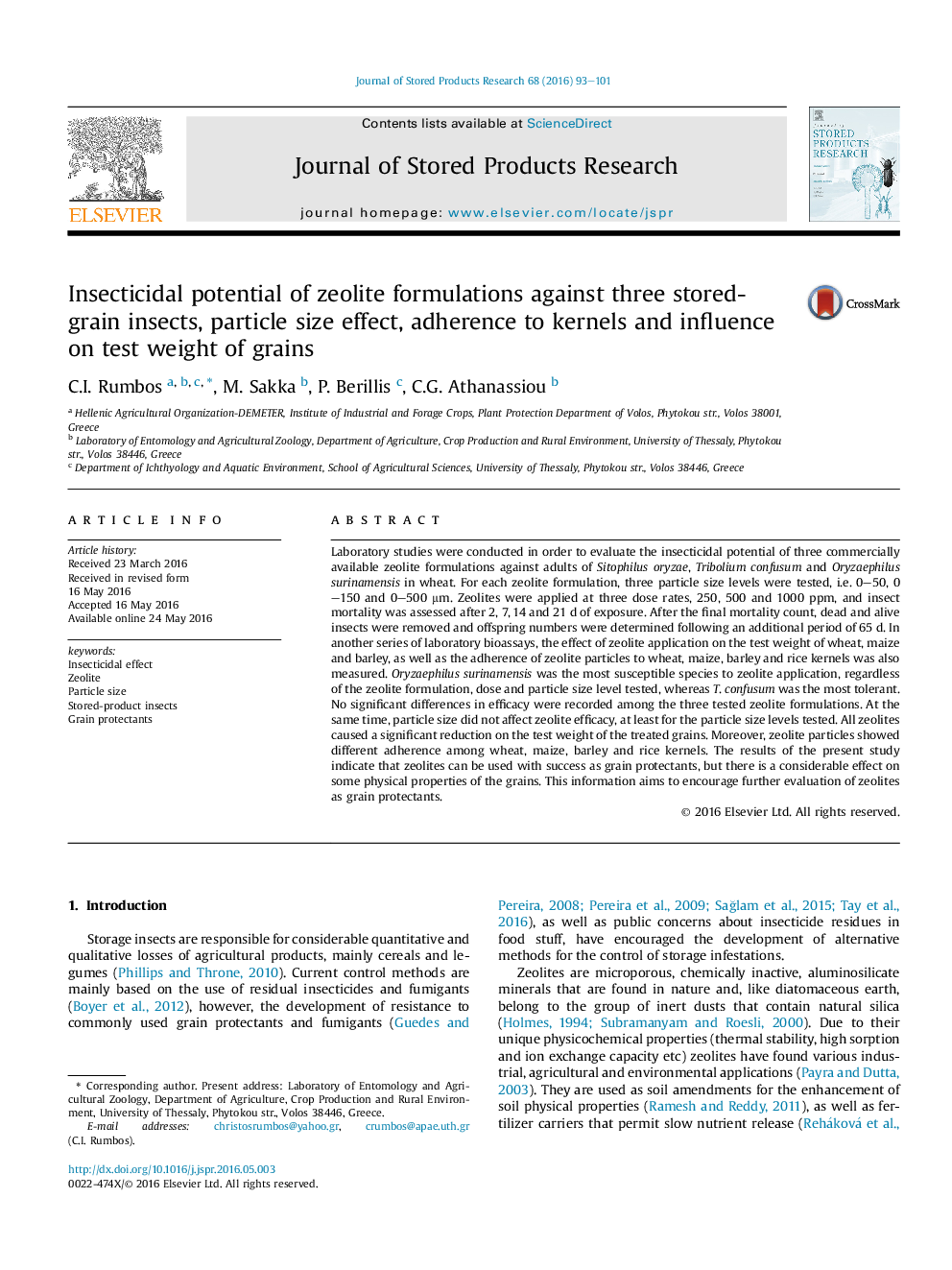| Article ID | Journal | Published Year | Pages | File Type |
|---|---|---|---|---|
| 4516932 | Journal of Stored Products Research | 2016 | 9 Pages |
•Oryzaephilus surinamensis was the most susceptible species to zeolite application.•Tribolium confusum was the most tolerant species to all zeolite formulations tested.•All zeolites caused a significant reduction on the test weight of the treated grains.•Zeolite particles showed different adherence among wheat, maize, barley and rice kernels.
Laboratory studies were conducted in order to evaluate the insecticidal potential of three commercially available zeolite formulations against adults of Sitophilus oryzae, Tribolium confusum and Oryzaephilus surinamensis in wheat. For each zeolite formulation, three particle size levels were tested, i.e. 0–50, 0–150 and 0–500 μm. Zeolites were applied at three dose rates, 250, 500 and 1000 ppm, and insect mortality was assessed after 2, 7, 14 and 21 d of exposure. After the final mortality count, dead and alive insects were removed and offspring numbers were determined following an additional period of 65 d. In another series of laboratory bioassays, the effect of zeolite application on the test weight of wheat, maize and barley, as well as the adherence of zeolite particles to wheat, maize, barley and rice kernels was also measured. Oryzaephilus surinamensis was the most susceptible species to zeolite application, regardless of the zeolite formulation, dose and particle size level tested, whereas T. confusum was the most tolerant. No significant differences in efficacy were recorded among the three tested zeolite formulations. At the same time, particle size did not affect zeolite efficacy, at least for the particle size levels tested. All zeolites caused a significant reduction on the test weight of the treated grains. Moreover, zeolite particles showed different adherence among wheat, maize, barley and rice kernels. The results of the present study indicate that zeolites can be used with success as grain protectants, but there is a considerable effect on some physical properties of the grains. This information aims to encourage further evaluation of zeolites as grain protectants.
